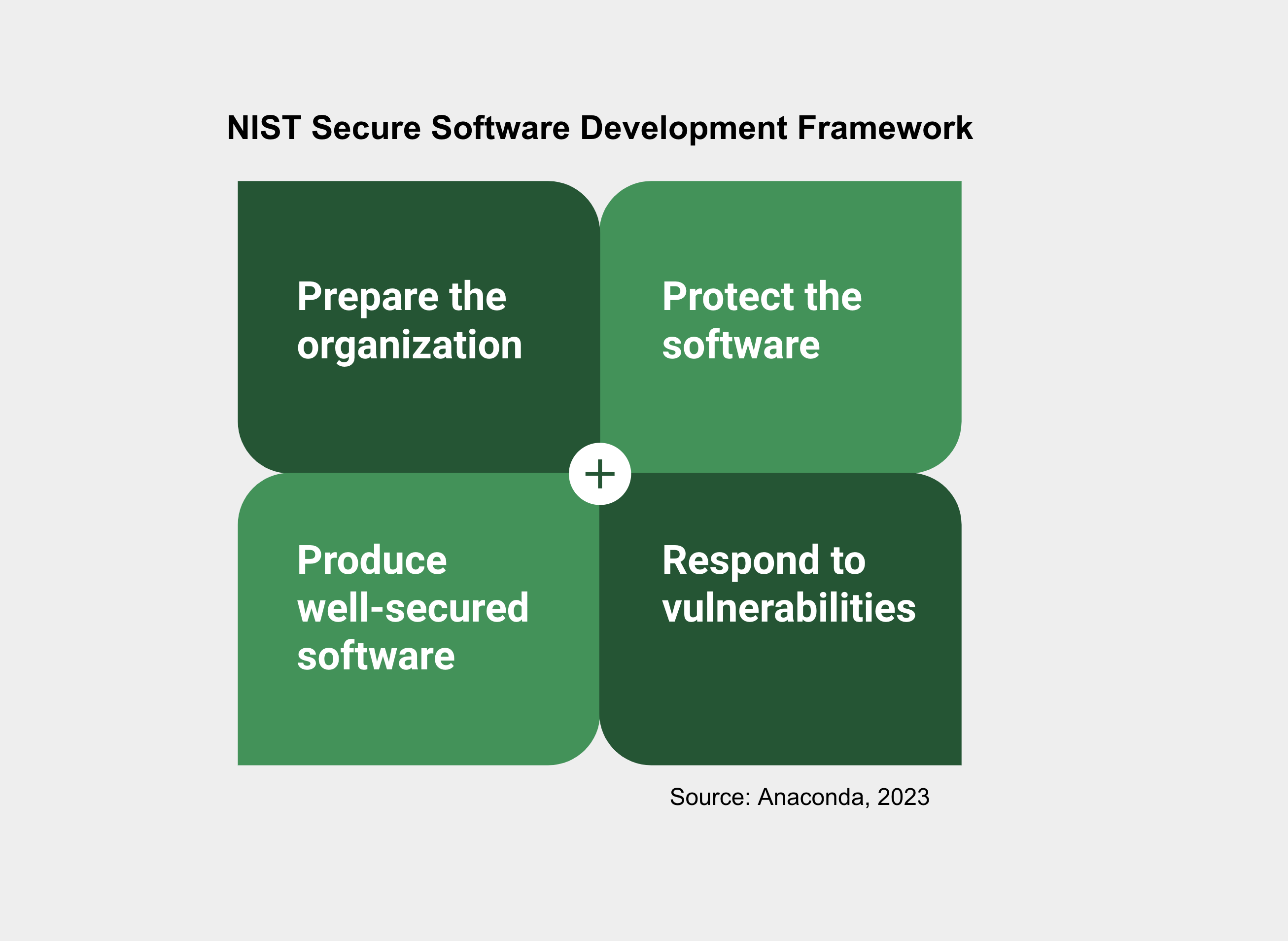Why Open-Source Software Security Should Be Your Top Priority

Kyle Leaders

Open-source software (OSS) is amazing and a great accelerator for business everywhere. However, using open-source software is not without its risks. This article will cover some common attacks that your software developers may face when using open-source software and libraries.
Most popular programming languages have a centralized repository of open-source libraries that anyone can use. Python has pypi.org, Node.js has npmjs.com, and Rust has crates.io as their respective repositories. All of these allow people to freely distribute their code to anyone who wants to use it in their software.
Users of these platforms may be vulnerable to various types of attacks that can introduce insecure or malicious code into systems, leading to devastating consequences. Moreover, with the open nature of these platforms comes an added risk: they make attractive targets for malicious actors who may attempt to compromise popular packages or distribute malicious ones. This leaves companies exposed to breaches of their systems and data loss.
It is important for developers to remain vigilant while using OSS and ensure proper measures are taken toward mitigating potential threats. The reality is that cyberattacks are not going away anytime soon. Therefore, it falls upon all of us, as users of open source, to stay informed about risks so we can continue enjoying and improving these tools without compromising safety.
Here’s a primer on some of these attacks, how they are executed, and how they can compromise your organization’s software supply chain.
1. Typosquatting is a cyberthreat that involves creating fake websites with slightly altered domain names to trick users into providing personal information or downloading malicious software. This deceptive tactic preys on human error, as many people are prone to typing mistakes when entering web addresses.
Typosquatters often target popular websites and use similar-looking URLs to lure unsuspecting visitors. For example, instead of www.amazon.com, they may create a site like www.amaz0n.com or www.amazone.com. Cybersecurity experts warn that typosquatting can be particularly dangerous because it can lead to identity theft, financial fraud, and ransomware attacks.
In the software development world, typosquatting often takes the form of putting malicious code into packages that are very closely named to popular software. An example of that could be someone spoofing the popular data processing package “pandas” with malicious packages named “pandaz” or “padnas.” If someone were to mistype the package name and then install that package, that simple typo could install malicious code!
2. Malware is a term used to describe malicious software designed to disrupt or damage computer systems, networks, and devices. It can take various forms such as viruses, worms, Trojans, ransomware, adware, spyware and more. With the increasing use of technology in our lives today comes an increased need for cybersecurity measures that can protect us from these malicious attacks.
Cybersecurity is crucial because malware poses significant threats to our personal information, security, and privacy while also affecting organizations’ operational capabilities. Malware spreads through various methods, including email attachments or links disguised as legitimate files or websites infected with malware scripts. The consequences of malware infections range from data loss and theft to financial losses resulting from cybercrime activities like stealing credit card details or login credentials.
Combatting this threat requires regularly updating software and disclosing known vulnerabilities via the standardized Common Vulnerabilities and Exposures (CVE) process, so that immediate action can be taken against them before they cause serious harm to individuals or organizations.
3. Dependency confusion is a cybersecurity vulnerability that can pose a significant threat to businesses. This occurs when legitimate software packages are replaced with malicious ones, leading to security breaches and data thefts. Hackers take advantage of the fact that developers often use third-party libraries and dependencies in their coding processes, which creates an opportunity for them to insert malware or other malicious code into these repositories without arousing suspicion. An example of this is the ctx and phpass hacks, in which malicious code was added to popular Python and PHP packages for a brief amount of time.
Once installed on their target system, the attacker can remotely execute commands, steal sensitive information, and even gain unauthorized access to critical systems. It’s crucial for organizations to implement strict security measures such as code reviews, vulnerability assessments, and regular software updates to reduce the risk of dependency confusion attacks.
As cyberthreats continue to rapidly evolve, it’s important for organizations of all sizes and industries to stay vigilant against these potential vulnerabilities to safeguard from harmful attacks that could be detrimental both financially and to organizations’ reputations.
4. Author impersonation is a cybercrime that involves criminals posing as legitimate authors to carry out malicious activities. Cybersecurity experts warn that author impersonation can cause significant harm, including reputational damage for the real author and financial loss for unsuspecting victims.
Impersonators may create deceptively named profiles on sites like GitHub, send fraudulent emails, or create fake social media profiles to deceive people into sharing sensitive information, downloading malicious “bug fixes,” or transferring money. In some cases, they may even hack into a legitimate open-source developer’s accounts to gain access to confidential data or intellectual property.
5. Code injection involves inserting malicious code into an application or website to gain access to sensitive data or take control of the system. This type of attack can be carried out through various means, such as SQL injection, cross-site scripting (XSS), and buffer overflow attacks.
Once successful, the hacker may be able to execute arbitrary commands on the targeted system and steal valuable information such as credit card details, developer credentials, or personal identification information.
It’s essential that organizations stay vigilant about cybersecurity threats by regularly updating software and implementing security measures like firewalls and antivirus software. For developers working in Python or R, it is critical to have all five of the following capabilities to ensure the security of your open-source software supply chain:
→ To learn more about open-source security, check out our recent blog article, “Why Open-Source Software Security Should Be Your Top Priority.”
Our customers include 90% of Fortune 500 businesses. For over a decade, Anaconda has been the platform of choice for enterprise organizations looking to centralize their use of Python and R. Our enterprise practitioners can build and collaborate more seamlessly, and their IT administrators have the role-based user access controls, policy engines, and security capabilities they need to govern their unique OSS supply chains. To learn more, schedule your enterprise Anaconda demo today.
Talk to one of our experts to find solutions for your AI journey.